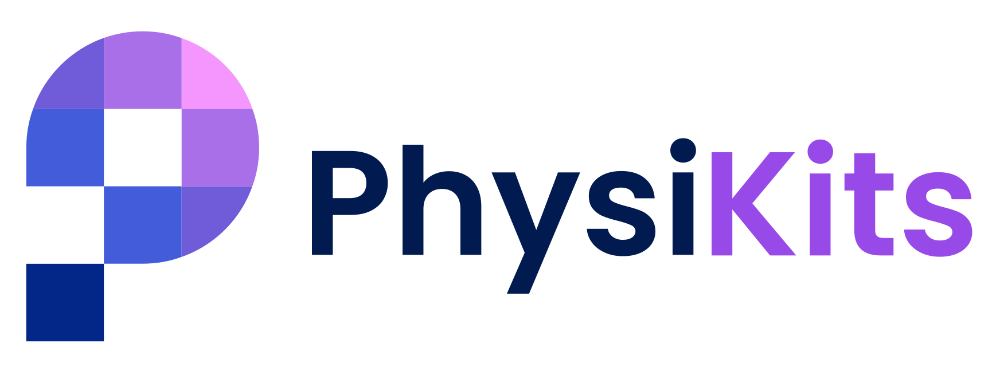
Muscle Soreness After Exercise: Should It Be Feared, or Embraced?
Jul 23, 2025If you’ve ever hit the gym, tackled a new workout, or pushed yourself on a long run, you’ve likely felt that familiar ache a day or two later. That’s Delayed Onset Muscle Soreness, or DOMS, a common side effect of exercise that can make stairs feel like torture.
But is DOMS something to dread, or is it a sign your body is adapting and getting stronger?
In this post, we’ll dive into what DOMS is, why it happens, and how you can manage it, drawing on insights from two recent research papers and our previous blog posts:
Why Physios Love Exercise: A Natural Medicine, and
Control the Negative! A Simple Exercise Trick that Deserves Attention.
This is one side-effect worth discussing, as it may not be a foe to fear but rather a friend to embrace.
What Is DOMS, and Why Does It Happen?
DOMS is the muscle pain and stiffness you feel 24 to 48 hours after intense or unfamiliar exercise, particularly exercises involving eccentric contractions — where muscles lengthen under tension, like when you lower a weight or run downhill. One thing we didn't discuss in our previous post, is that these movements stress muscle fibers, causing microtears. According to research by Peake et al. (2017), these microtears trigger an inflammatory response, leading to soreness, swelling, and temporary strength loss. The good news?
But importantly, this process is part of muscle adaptation, potentially linked to muscle protein synthesis, which is why it builds stronger muscles over time!
The discomfort of DOMS typically peaks within 48 hours and fades within a few days, as your body repairs the damage and adapts to the stress. While it can feel unpleasant, DOMS is a natural response to challenging your muscles, especially if you’re new to exercise or switching up your routine. This repair process is key to building resilience and strength, suggesting DOMS might be a sign you’re pushing your limits in a good way.
Should You Fear DOMS?
DOMS can feel like a warning—pain often seems bad, right? But it’s not an injury; it’s part of muscle adaptation. Heiss et al. (2019) note DOMS is short-lived and usually doesn’t need medical intervention. However, severe or prolonged pain could indicate overtraining or injury, so listen to your body. If soreness lasts over a week or severely limits movement, consult a professional.
For beginners, DOMS can be daunting and might discourage exercise. Yet, the repeated bout effect means DOMS lessens with regular training as muscles adapt. Instead of fearing it, see DOMS as a temporary step toward fitness.
Embracing DOMS: A Sign of Progress
DOMS can mark effort. The microtears causing it trigger repair and growth, aligning with increases in strength discussed in our blogpost on Exercise in general, making them more resilient. For athletes or fitness enthusiasts, DOMS can show you’ve pushed enough to spark growth—key for strength and endurance.
You don’t need DOMS to progress, though. As muscles adapt, you can gain strength without soreness. The goal isn’t to chase soreness but to balance effort with smart recovery, which leads to ways to manage DOMS.
Minimising DOMS
DOMS is temporary but can disrupt your routine. Here are some simple ways to ease or prevent DOMS, based on research by Heiss and colleagues (2019):
- Cold Water Immersion (CWI): Soak in cold water (10–15°C) for 10–15 minutes after exercise to reduce inflammation and soreness by constricting blood vessels.
- Compression Garments: Wear compression socks or leggings (18–21 mmHg) post-exercise to reduce swelling and enhance muscle function recovery.
- Active Recovery: Do light exercise, like walking, to temporarily ease soreness by boosting blood flow, though stretching may not always help.
- Massage: Apply a 10–20 minute massage or use a foam roller on sore muscles to reduce inflammation and short-term soreness.
- Nutrition and Supplements: Eat a protein-rich diet or try tart cherry juice, but consult a doctor as benefits vary.
- Non-Steroidal Anti-Inflammatory Medications (Use Sparingly): Use ibuprofen only for severe discomfort, as it may hinder muscle repair by reducing inflammation.
Prevent DOMS by Easing Into Exercise!
To minimise DOMS, start slowly and increase intensity gradually. Eccentric exercises, like those in Control the Negative!, are major DOMS triggers. If you’re new or switching activities, use lighter weights or shorter sessions. Warm-ups and proper form also help. Over time, muscles adapt, reducing DOMS frequency and intensity.
The Bigger Picture: DOMS and Your Fitness Journey
DOMS is a natural part of pushing limits, especially with eccentric exercises that drive muscle growth. Though uncomfortable, it’s temporary and signals adaptation. Using strategies like cold water immersion or compression, you can manage symptoms and recover faster. As seen in Why Physios Love Exercise and Control the Negative!, recovery and adaptation build a stronger body.
Should you fear DOMS? No—it’s a short-term sign of challenge. Should you embrace it? Somewhat, as it reflects progress, but don’t seek soreness. Focus on consistent training, smart recovery, and listening to your body. DOMS becomes a stepping stone to fitness goals.
References
Heiss, R., Lutter, C., Freiwald, J., Hoppe, M. W., Grim, C., Poettgen, K., ... & Hotfiel, T. (2019). Advances in delayed-onset muscle soreness (DOMS)–part II: treatment and prevention. Sportverletzung· Sportschaden, 33(01), 21-29. https://doi.org/10.1055/a-0810-3516
Hotfiel, T., Freiwald, J., Hoppe, M. W., Lutter, C., Forst, R., Grim, C., ... & Heiss, R. (2018). Advances in delayed-onset muscle soreness (DOMS): Part I: Pathogenesis and diagnostics. Sportverletzung· Sportschaden, 32(04), 243-250. https://doi.org/10.1055/a-0753-1884
Peake, J. M., Neubauer, O., Della Gatta, P. A., & Nosaka, K. (2017). Muscle damage and inflammation during recovery from exercise. Journal of applied physiology. https://doi.org/10.1152/japplphysiol.00971.2016
Stay Informed!
News, updates, and science delivered to your inbox.
We will never sell your information, for any reason.

